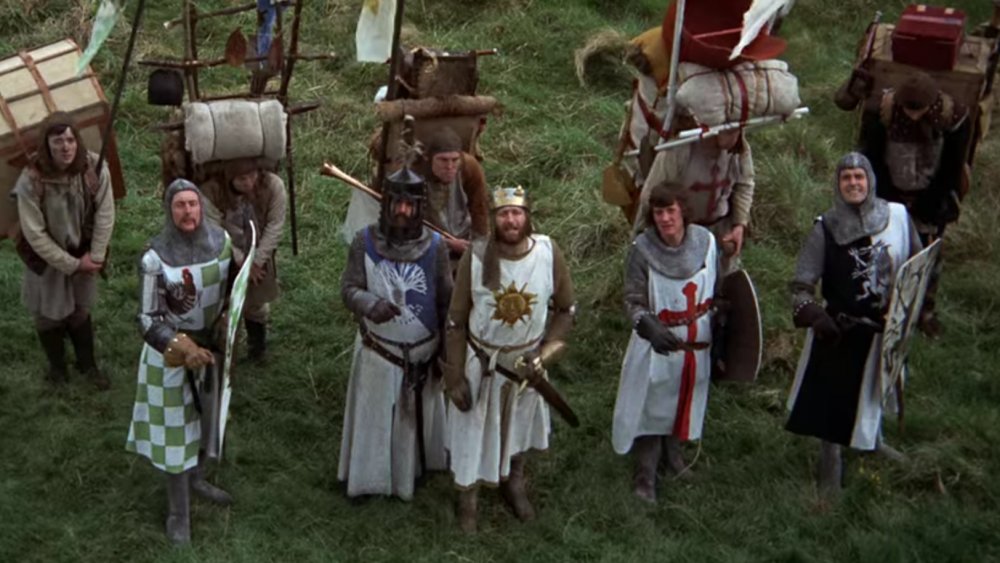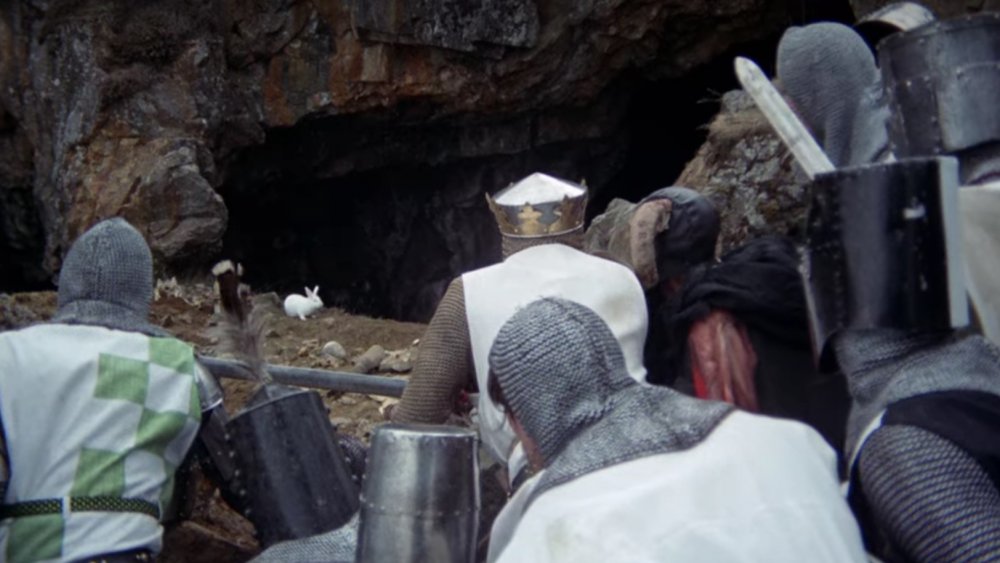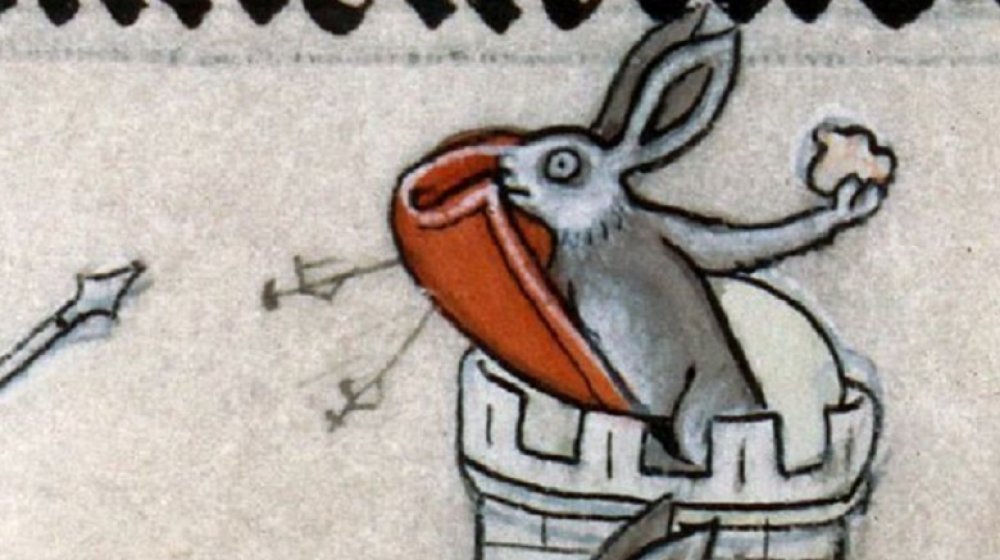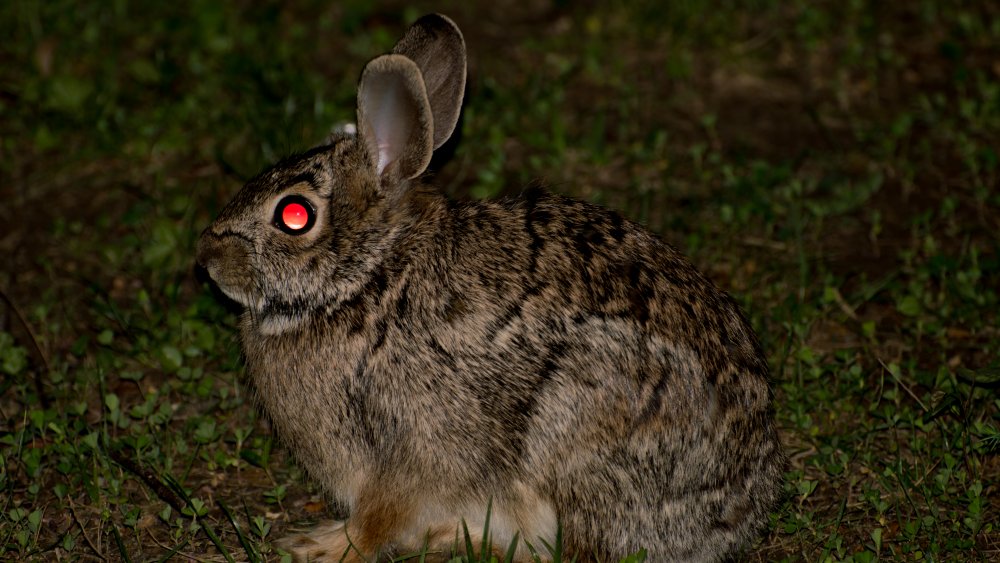The Truth About The Killer Rabbit From Monty Python And The Holy Grail
Monty Python and the Holy Grail (1975) stands as a towering achievement of comedy, chock full of absurdities, non-sequiturs, digressive dialogue, and ingenious scenes. Comedy troupe Monty Python crafted a sequence of comedic bits that are so memorable and well-known, that they've long-transcended memedom and infiltrated the realm of general societal knowledge: the coconut horse trot, the "bring out your dead!" scene, the black knight's "'tis but a flesh wound" battle, the knights who say "ni," the Camelot song-and-dance routine, all the way to the final scene where Arthur gets arrested by modern-day police. As reported by Mental Floss, the film's legacy comes as a result of a mere £200,000 budget, personally raised by the members of the BBC comedy show Monty Python's Flying Circus, which only adds to the film's charm.
Not all of the scenes in The Holy Grail are utterly random, however. The film deftly plays off of hero tropes that have been a part of Western lore for centuries: going on quests, encountering sages, passing tests of valor, overcoming obstacles, gathering a group of followers, etc. The film also roasts any sense of smug nationalism that anyone may have about England's monarchy and the ludicrousness of much of the Arthur mythos, such as Arthur becoming king by receiving the sword Excalibur from the Lady of the Lake (a watery tart, or moistened bint, as the film says). In fact, under the hood, the writing of The Holy Grail reveals not only a savagely sharp wit, but a real understanding of medieval history.
Death awaits you all with nasty, big, pointy teeth
One of the film's most bizarre bits illustrates this point perfectly. It's a scene that might leave a few heads scratching were it not for very real facts behind its inclusion: the killer rabbit scene.
About two-thirds of the way through the film, Arthur and the Knights of the Round Table come across Tim the Enchanter (John Cleese) on their way to search for the Holy Grail. Tim's mid-conversation fireball hurling precedes a monologue about the cave of Caerbannog, which holds mystic runes that reveal the location of the grail. The cave, he says, is guarded by a foul and savage beast that no one has managed to defeat. When Arthur and company arrive at the cave, they discover that the "beast" appears to be nothing more than a small, white, fluffy rabbit hopping around in the dirt amongst heaps of bones.
Medieval comedy drawings of rabbits and knights
Arthur and the knights chastize Tim for getting them worked up over nothing. Arthur sends in Sir Bors to deal with the "beast," at which point the rabbit promptly rockets towards Bor's throat and decapitates him in mere seconds. The knights charge in, lose a couple more of their number, and almost give up before finally resorting to using the Holy Grenade of Antioch to blow the rabbit-monster to bits and gain entrance to the cave.
The choice of a rabbit might seem like nothing more than a clever inversion of expectations: the beast is a tiny herbivore that seems utterly helpless, and is generally regarded as one of the most gentle creatures on the planet. This is exactly the point, however. There is very real historical precedent for such a choice in the pages of medieval manuscripts, and what was essentially the comedy writing of its age: drolleries.
The margins of medieval manuscripts often reveal rabbits drawn simply for the fun of it, as described in Open Culture. Paintings featuring Jesus and Mary often contain rabbits, even well into the Renaissance, such as Titian's 1530 painting "Mary and Infant Jesus with a Rabbit." Rabbits have always represented gentleness and the proper order of the natural world, to the extent where they became the subject of an entire sub-genre of often-macabre, comedic writing during medieval times in England.
Funny and bunny: almost the same word
Humorous writers drew pictures of rabbits as aggressive, monstrous creatures riding on the backs of nuns or bishops (the literate of their day), wielding axes, decapitating combatants, holding shields in towers to protect against arrows, or fighting against knights. These small comics were called "drolleries," and they satirized the big, brave, armor-clad men of the day by pitting them against tiny rabbits. This was so common, in fact, that the Middle English nickname "stickhare" was used to describe an overly confident hunter mewling at the sight of a rabbit wielding a stick. "The rabbit's revenge" was an immensely popular drollery, as discussed in Ancient Origins, particularly from the 13th to 15th centuries.
Arthur and his fraudulently brave knights in Monty Python and the Holy Grail are just the latest in a centuries-old trend of using one of the world's meekest creatures for the purpose of comedy, particularly the satire of either clergy or pompous, chest-thumping fighters. It seems Monty Python's Graham Chapman, John Cleese, Terry Gilliam, Eric Idle, Terry Jones, and Michael Palin knew exactly what they were doing when they built the very not-random "rabbit-monster guarding the cave of Caerbannog" scene.



